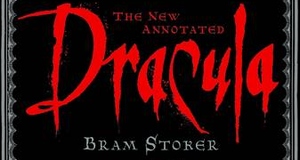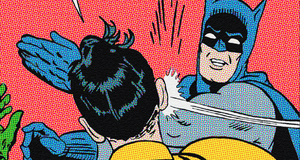Vampires: The Ever-Changing Face of Fear
By
2010, Vol. 2 No. 05 | pg. 1/2 | »
KEYWORDS:
In the past two-hundred or so years, vampires have transformed from a sort of worst nightmare into the charming hero of our dreams. Flashback to 1734, Oxford English Dictionary’s first record of the word vampire: they were generally and, depending on geographical location, inconsistently thought to be red-faced, fat on blood, furry of foot, and may or may not have possessed more than one nostril. Fast-forward to present: their impossibly pale, perfectly sculpted faces and delicate fangs adorn best-selling book covers and box-office hit movie posters. This is quite the makeover, and these vampires have myriad horror and romance authors, as well as scriptwriters and directors, to thank for their drastic change in fortunes. The modern day vampire originated in literature, long before movies, television shows, and online fan groups. The vampires readers now know and may or may not love were created in 1819 with John Polidori’s The Vampire. This tale of an orphaned but affluent gentleman visiting London, who meets and befriends Lord Ruthven (the vampire) set the scene for future vampire fiction, converting the heretofore mindless creature into a being of intelligence and sophistication. “Polidori transformed the vampire from a character in folklore into the form that is recognized today — an aristocratic fiend who preys among high society” (Frayling). Lord Byron is often inaccurately credited as the author of this work, as Polidori was his personal physician and accompanied Byron on his trip to Lake Geneva with Percy and Mary Shelley. The "Vampyre" was created on this trip, as a result of the same rainy day writing prompt as Mary Shelley’s Frankenstein, and illustrated English society’s increasing fascination with the macabre. This new rendition of vampirism continued in serial publications such as Varney the Vampire written by James Malcolm Rymer in 1847. This work appeared in weekly installments, and was referred to as a “penny dreadful” because of its low price and poor quality of writing. It was quite long, somewhere around 800 pages, and detailed the adventures of Varney, a Victorian gentleman who wreaked havoc on women, families, societies, and often himself. Another important work is Joseph Sheridan Le Fanu's Carmilla, written in 1871, which features a vampirical Austrian countess who preys on young women. However, the majority of these works are little known in comparison to Bram Stoker’s 1897 Dracula, which is commonly regarded as the original vampire novel. Stoker drew from many previous vampire novels to create his own Count Dracula, the ghastly gentleman who lives in a Transylvanian castle and is eventually destroyed by vampire slayer van Helsing. Marilyn Ross (technically W.E. Daniel Ross writing under a female pseudonym) later wrote the Barnabas Collins series in 1966–71, based on the Dark Shadows TV series, which set the trend of vampires as tragic heroes rather than as the epitome of evil. More recently, author Anne Rice has been generally regarded as the reigning queen of vampire literature. Her highly popular and influential Vampire Chronicles (1976–2003) detail the escapades of Lestat and Louis, two vampires living in New Orleans, and progress to illustrate dozen or so other vampire characters spanning the globe and the centuries- many of whom possess their own book: The Vampire Lestat, The Vampire Armand, Vittorio the Vampire, and Pandora are a few examples.Says Margaret Carter, author of The Vampire as Alien in Contemporary Fiction, “The focus on vampire subjectivity opens what was once a repulsive object of horrified speculation into a creature of extreme sensitivity and pathos. The narrative position ‘reflects a change in cultural attitudes towards the outsider’, an effect of Romanticism that, in various contemporary fictions, turns the threat of the vampire into an attractive quality.” The story thus blurs the line between a world of human subjects and terrifying, unnatural creatures. As with Mary Shelley’s Romantic monster of nature, the conferring of a voice within the text endows the vampire with feelings, motives and, of course, a strange humanity (Botting). Less teen-oriented, but similarly popular is Laurell K. Hamilton’s Anita Blake: Vampire Hunter series, which focuses on a young policewoman in St. Louis who also happens to be a necromancer and human servant of the master vampire of the city. Deviating from traditional vampire lore, J.R. Ward's Black Dagger Brotherhood series holds vampires to be of an entirely different species than humans, and to require the blood of the opposite sex in order to survive. These vampires live fairly normal childhoods, until they undergo a transition in their twenties which leaves them unable to bear sunlight. The series follows the adventures of six vampire brothers who defend their race against humans who have lost their souls. Kim Harrison's The Hollows series takes an alternate history approach, where a virus inside a genetically modified tomato wiped out a quarter of the human race. As a result of this pandemic, various paranormal and occult beings, such as vampires, werewolves, fairies, witches, etc. reveal themselves to the much-diminished human population and begin their own open communities. Mary Janice Davidson has created a highly popular comical series about a woman who- all on her thirtieth birthday- loses her job, gets killed in a car crash, and then wakes up in the funeral home to discover that she is somehow queen of the vampires. In the past three years, however, a new author by the name of Stephenie Meyer has held captive an enormous teen (and even adult) audience with her wildly popular Twilight series. Perhaps one of the most realistic and relatable of modern vampire stories, it follows the life of Bella Swan after she moves to a small and rainy Oregon town and encounters – in her high school, posing as a student- hundred-year-old vampire Edward Cullen. Jessica Boyer, a 20-year-old English major at Florida State University and an avid Twilight and paranormal romance fan, says, “True love conquers all. It’s a story of compromise and growing up, with the added benefit of a supernatural twist. But there’s still interesting and fairly realistic character interaction, throughout most of the book. I think it’s so popular because it appeals to virtually everyone with a romantic bone in their body. It’s this gorgeous everlasting vampire who’s been alive for a century and never found someone like her; that I-can’t-live-without-you kind of love. Its like Romeo and Juliet without the sad ending and the indecipherable Shakespearean writing.” On USA Today’s Best-Selling Books list, the top four were Twilight, New Moon, Eclipse, and Breaking Dawn- incredibly, all vampire romance novels by the same author – Stephenie Meyer. Following this, an additional nineteen books on this list were paranormal romances. “Not since Anne Rice's best-selling series about Lestat have so many readers thirsted for novels about blood drinkers who are sexy as well as scary. ‘It’s a different twist on the bad-boy hero,’ says Nicole Kennedy of Romance Writers of America. At Borders stores, sales of novels with paranormal themes, which include vampires, are up as much as 30% over the past two years, particularly romance, says spokeswoman Sue Grimshaw. ‘Readers have embraced the genre.’ Nearly 20% of all romance novels sold in 2005 had paranormal story lines, compared with 14% in 2004, according to Romance Writers of America figures. ‘Vampires are one of the most popular trends in paranormal romance,’ Kennedy says” (USA TODAY). Vampires in television and movies have followed doggedly along with literary trends- often, some of the most popular vampire novels have been turned into hit shows and films. The 1922 silent film Nosferatu was essentially an unauthorized adaptation of Bram Stoker’s Dracula, using different character names, and omitting some characters entirely. The plot is more or less the same, with only slight deviations from the original novel. The official movie, Dracula, was released in 1931, followed by The Horror of Dracula in 1958, and Bram Stoker’s Dracula in 1992. Also spawned from the original Dracula story are movies such as Dracula’s Daughter, Brides of Dracula, and Zoltan, Hound of Dracula. One of the most well known vampire movies, more prominently also a T.V. show, is Buffy the Vampire Slayer. The movie, produced in 1992, is a parody about a cheerleader destined to kill vampires, and has been deemed of little importance in light of the highly popular T.V. show. The Emmy Award-winning and Golden Globe-nominated show spanned six years, and usually reached between four and six million viewers on original airings. The show takes a darker and more serious approach to the movie, and follows Buffy through high school troubles and battles with evil vampires bent on unleashing Hell upon her hometown of Sunnydale. Fans of Buffy say that the combination of reality and fantasy is the main attraction. Donald Godfree, a 25-year-old nursing student at Florida Community College Jacksonville, has followed the television series through its many seasons. “It was real life, but with supernatural stuff going on, too. It was like being a teenager and experiencing escapism all at the same time.” Anne Rice’s smash novels Interview with a Vampire and Queen of the Damned were also made into movies in 1994 and 2002, respectively. Interview with a Vampire was deemed a box office hit, and made almost $100 million in the United States. Queen of the Damned managed to top the box office, despite a lukewarm reaction from fans, and poor reviews from critics. Blade I & II (which are actually adaptations of Marvel comics of the same name) are about a man who is half-human, half-vampire, and fights his urge to drink blood by injecting himself with a chemical substance. Ironically, he swears vengeance against his own race and becomes a vampire hunter, eventually dealing with an inter-vampire feud about those of pure blood and those who were merely created. “The dead used to be a world away, far beyond the realm of mortal existence. If they walked the Earth at all, they inhabited the night. But the coffins and long black capes are gone. The destructive haunting is over. And forget about menacing the living — these days, the dead are just like us. Hollywood's dead, circa 2008, wear jeans, type obsessively on their BlackBerries and fret over relationship woes. They solve crimes, they give advice” (Associated Press). The movie adaptation of Stephenie Meyer’s Twilight book series hits theaters in November, and has already created a huge sensation predominately among young adults. “You know a movie is going to be huge when the soundtrack tops the sales charts before the film is even released,” says Rolling Stone’s Daniel Kreps. The soundtrack has sold 165,000 copies before the film has even hit theaters. “What Twilight does offer is epic star-crossed romance, melodrama, peril, an attractive young cast and an action-packed finale. But mostly, it has arguably the most passionate fan base of any literary adaptation since Harry Potter. ‘It's like a little bizarre, little perfect-storm phenomenon,’ said Twilight director Catherine Hardwicke” (Washington Post). Anthony Masters, author of The Natural History of the Vampire, is less than complimentary on the vampires of modern day. “Most of these modern vampires are psychotic and have abandoned the traditions of their forebears. It is much more likely for your twentieth-century vampire to be a pallid-faced little man with a greasy tie and carpet slippers living in the suburbs than a Gothic monster.”Continued on Next Page » Suggested Reading from Inquiries Journal
Inquiries Journal provides undergraduate and graduate students around the world a platform for the wide dissemination of academic work over a range of core disciplines. Representing the work of students from hundreds of institutions around the globe, Inquiries Journal's large database of academic articles is completely free. Learn more | Blog | Submit Latest in Literature |
















